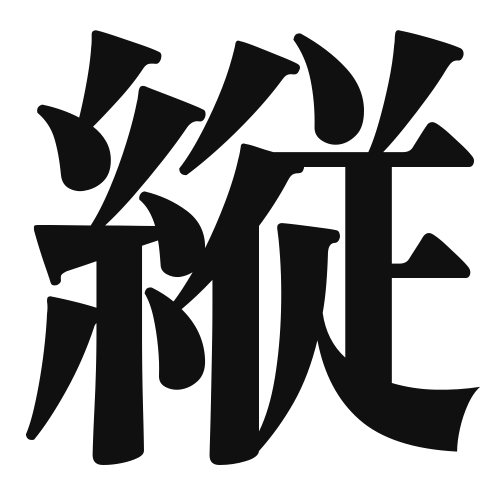1. Overview of Meaning
The kanji “縦” (pronounced “tate” in Japanese) means “vertical” or “lengthwise.” It is used to describe something that is oriented in an up-and-down direction, as opposed to horizontal.
2. Formation and Radicals
The kanji “縦” is a compound character that combines two elements: the radical “糸” (meaning “thread”) and the character “竖” (which relates to vertical orientation). This combination reflects the idea of something being long and upright, similar to how thread hangs down.
The radical “糸” is commonly associated with textiles and threads, emphasizing the connection to vertical lines in fabric or weaving.
3. Examples of Usage
Common words and phrases that include “縦” are:
- 縦長 (たてなが, tatenaga) – vertical length
- 縦線 (たてせん, tatesen) – vertical line
Example sentences in daily conversation:
- この絵は縦に長いです。 (このえはたてにながいです。) – This painting is long vertically.
- 縦のラインが美しいドレスですね。 (たてのラインがうつくしいドレスですね。) – The vertical lines of this dress are beautiful.
4. Synonyms and Antonyms
Similar kanji with related meanings include:
- 直 (ちょく, choku) – meaning “straight” or “upright,” but it does not specifically refer to vertical orientation.
Antonyms include:
- 横 (よこ, yoko) – meaning “horizontal,” which describes something oriented from side to side.
5. Cultural and Historical Background
The concept of “縦” is significant in Japanese culture, particularly in art and design, where vertical lines are often associated with elegance and grace. In traditional Japanese architecture, vertical elements are prominent, symbolizing strength and stability.
Proverbs and idiomatic expressions that include “縦” may not be as common, but the idea of verticality often appears in discussions about balance and harmony in life.
